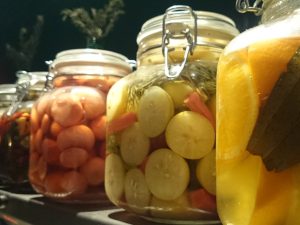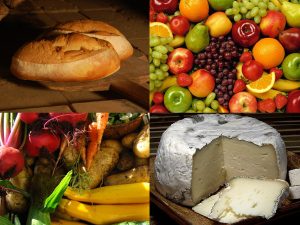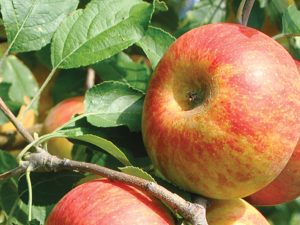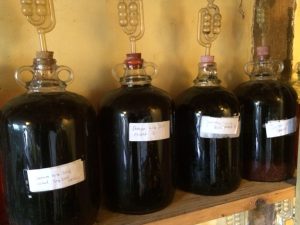Cider, perry & juices - introduction
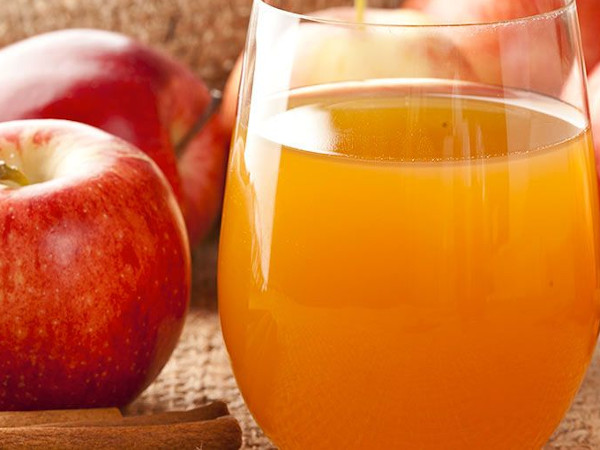
“The ‘new traditionalist’ may by good luck produce a superb cider but all too often it is acetic, murky, full of strange odours and really quite unpleasant to drink, except to the committed fanatic or to the unsuspecting tourist who expects no better of his ‘scrumpy’. The factory maker always produces a consistent product, but it is bland and undistinguished, competing with the lager market in suburban pubs and clubs. Somewhere between these two extremes lies the middle ground of highest quality where the small-scale ‘craft’ cider maker is aiming to operate” – Andrew Lea
Contents
What are cider, perry & juices?
Juices are what come out of pressed fruit, and as ‘ciderologist’ Gabe Cook says: “Quite simply cider is the result of the fermentation of apple juice; a fruit fermentation just like wine”. For perry, substitute ‘pear’ for ‘apple’. In the US, apple juice tends to be called cider, and the alcoholic drink, ‘hard’ cider. In the alcoholic drink, yeast turns the sugar in the fruit into alcohol and carbon dioxide.

Any apples or pears can be used to make cider and perry. In the south-west of the UK (the world’s biggest per capita cider consumer), they grow traditional cider apples and perry pears that are high in tannins that make them not so good for eating, but great for making strong cider / perry. Elsewhere, there don’t tend to be the same kind of cider orchards, and so they make a lighter cider from dessert / cooking apples. You need perry pears for perry, however. Perry tends to be sweeter than cider, because pears contain a higher proportion of a sugar called sorbitol, which doesn’t ferment, leaving more residual sugar in the final product. Cloudy cider / perry is less finely filtered than the clear varieties.
The ancestor of all apples grew in central Asia; apples were brought through the Middle East to Europe, and fermented apple drinks have existed in cultures in all those regions for thousands of years. The Vikings were keen cider drinkers. They settled in Normandy, then after 1066, brought new cultivars, orchards and pressing technology to England.

Commercial ‘ciders’ tend to be made very quickly from imported juice concentrate, water, flavourings, colourings, preservatives and sugar. We don’t recommend them, and they shouldn’t be called cider any more than grape-flavoured alcopops can be called wine.
Real cider is made from 100% juice, with very little intervention and no additives (even the yeast can come from the air or from the skin of the apples – as with sourdough bread).
Home-made, small-scale scratter and juice press. The rest of the playlist is here.
What are the benefits of cider, perry & juices?
Real cider and perry keep traditional orchards alive and support rural economies – and if you think about it, they’re the only tipples that come from trees, which are both a carbon store and a superb habitat. Traditional orchards are great for biodiversity and wildlife, because the trees age more quickly. A 100-year-old apple tree will show far more signs of ageing than a 100-year-old oak, so there will be more dead wood, providing sustenance for a range of insects and micro-organisms – the base of the food chain.
Buying local, traditional ciders and perries keeps craft producers in business, and means that traditional orchards still have a value and a purpose, which means they’re less likely to be grubbed up. Also, communities often have apple harvesting and pressing days that bring people together and that have a strong social, as well as an economic and ecological value.
Making cider or perry is a way of preserving the fruit crop.

What can I do?
Buying real cider & perry
You can support independent, real cider and perry producers whenever you can. Find producers online, and look out for real cider and perry when you’re out and about. Camra give advice about where to look and what to ask. Don’t be fooled by the big corporates using folksy names and advertising to make it look as though they’re family businesses. If you’re really keen, you can indulge in a bit of cider tourism. Treat craft cider with respect though – it can be quite potent.
Making cider & perry on a medium scale in Herefordshire.
Making juice
You’ll have to set up and take down the equipment for washing, macerating and pressing the fruit, no matter how much you produce (unless you’re doing tiny amounts that you can process in a blender in your kitchen, then filter through a muslin bag). So if you have access to several large-ish fruit trees, it’s a good idea to get a gang of people together, or hold a community event. It may also be an idea to attend a community event yourself, before doing your own pressing.
A large apple tree could provide 250kg of apples, which will result in around 125 litres of juice, which represents around 150 x 750ml bottles.

Fruit for juicing needs to be fresher / cleaner than fruit for making alcohol. Bruising or a few bugs is fine for fruit for cider / perry, because the fermentation process kills any nasties. So fallen fruit is fine for cider / perry, but fruit for juice is picked from (or shaken from) the tree.
Pick and sort your fruit – cut out rotten bits – then wash them in tubs to remove mud and dirt. Then you use a machine called a scratter to macerate the apples into a pulp. You can make your own (see video) or find suppliers online. Vigo have been recommended to us by people in the know. If you do make your own, a scratter is something that is perfectly suited to pedal-power (it’s been done).

Once the fruit has been pulped, it’s then pressed. Again, you can buy or make a press (or even hire one – search online). A common way to do it is by stacking up hessian bags (or folded ‘envelopes’) full of pulp, putting a board and blocks on top, and applying force down onto them with a handle that can be turned on a threaded rod, so that the bags are squeezed incrementally until all the juice is extracted via gravity into buckets. As a buckets become full, it can be replaced with another, and the juice emptied into a demijohn.
There are also barrel presses that contain the pulp entirely. Force is applied from above, by hand, electric motor, or even car jack, and juice escapes via a tap at the bottom.

After all the juice has been extracted, what’s left is called ‘pomace’, and can be fed to livestock or composted. Then the next stack of hessian bags can be pressed until all your crop has been juiced – after which you have to take apart and wash all your kit, including hessian sacking, muslin, containers etc.
The juice will start to ferment after a few days, so anything you don’t drink fresh you’ll need to freeze or pasteurise, after which it will last for 1-2 years.
Here’s a more detailed guide to pressing apples from the Orchard Project – and if you have apples you can’t juice yourself they recommend you donate apples to their charity partner Hawkes who make cider from donation apples: https://wearehawkes.com/appledonors/. There are several projects like this around the country.
Home-made 10-ton fruit press.
Making cider & perry
Making cider / perry is much closer to making wine than brewing beer. It’s a very simple process – you follow the steps above for making juice, then allow it to ferment. You can ‘wild’ ferment, which uses wild yeast from the surrounding air, or you can add yeast yourself. The juice ferments in a demijohn with an airlock, and should be ready to drink in a few weeks, when air bubbles stop appearing. The longer the fermentation process, however, the better it tastes (is the general consensus). When ready, you can rack / siphon the cider / perry into bottles or storage vessels. When you’ve mastered the process, you can graduate to larger fermentation barrels.
Here’s a more detailed guide to making cider from the Orchard Project, and here’s some info from Real Cider, and if you’d like to go deeper into the subject, here’s a wealth of information from Wittenham Hill Cider.

You don’t have to comply with any regulations if you’re making juice, cider or perry for your own consumption and / or to give to friends. If you’re making it for sale, you don’t have to pay duty if you’re producing less than 7000 litres per year; but commercial cider-makers have to register with HMRC however much they’re producing; and talk to your local council about registering as a food business. They’ll tell you about the rules you have to comply with.
Specialist(s)
Thanks to Lizzy Pegler of the Orchard Project for information.
The specialist(s) below will respond to queries on this topic. Please comment in the box at the bottom of the page.

Lizzy has worked with The Orchard Project for six years. She previously lead their apple-saving enterprise that transformed surplus fruit from urban orchards into cider. After The Orchard Project partnered with Hawkes cidery, Lizzy transitioned into a project manager role. She supports communities in planting and caring for urban orchards, and helps to harvest the apples that are donated to Hawkes cider project. She believes in the importance of re-wilding our cities and creating more opportunities for people to experience the magic of nature.

